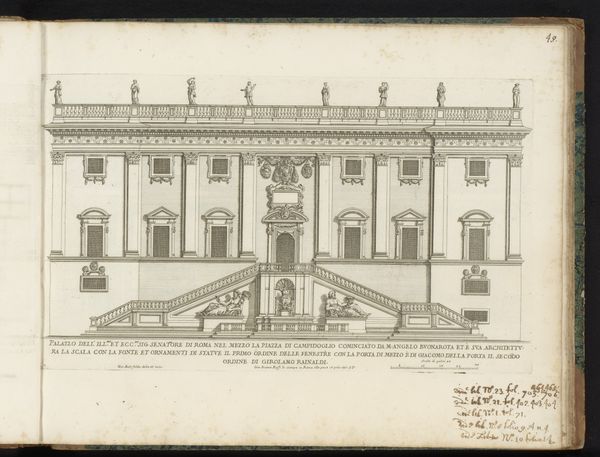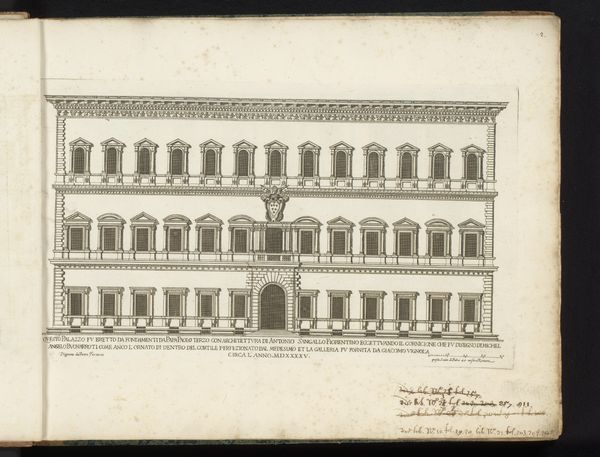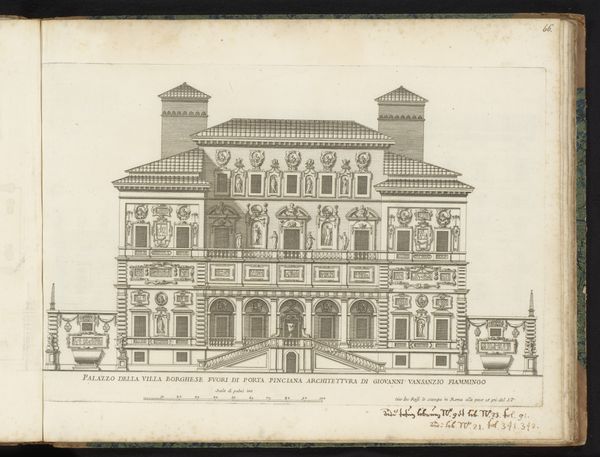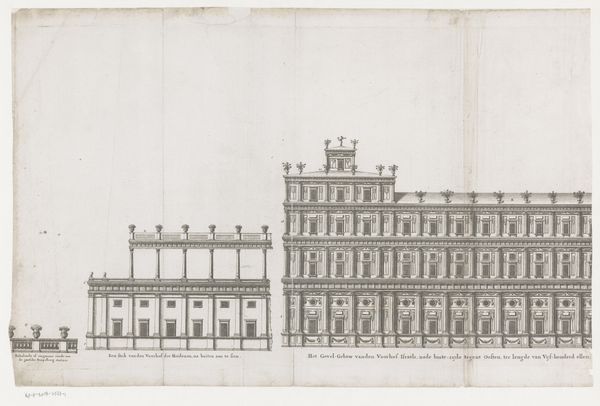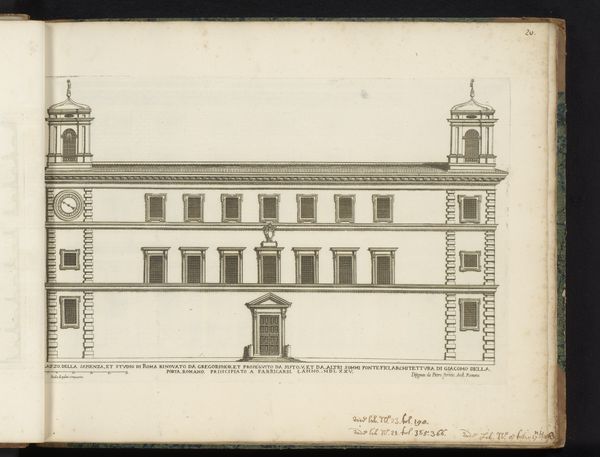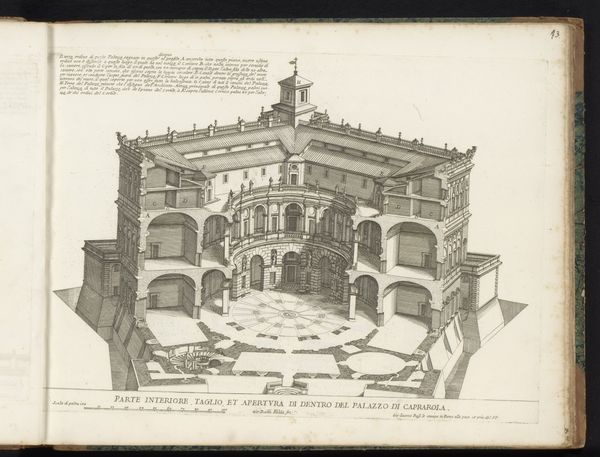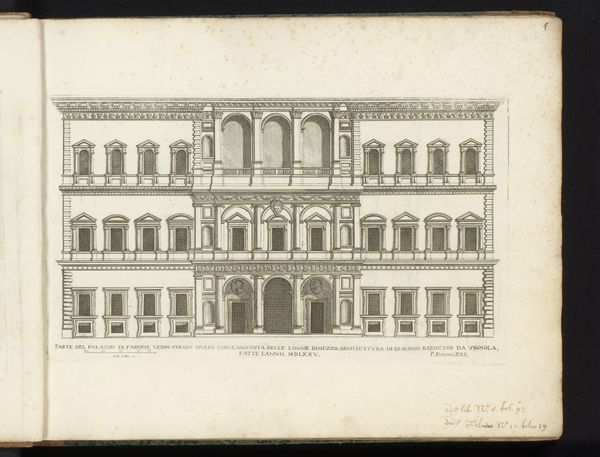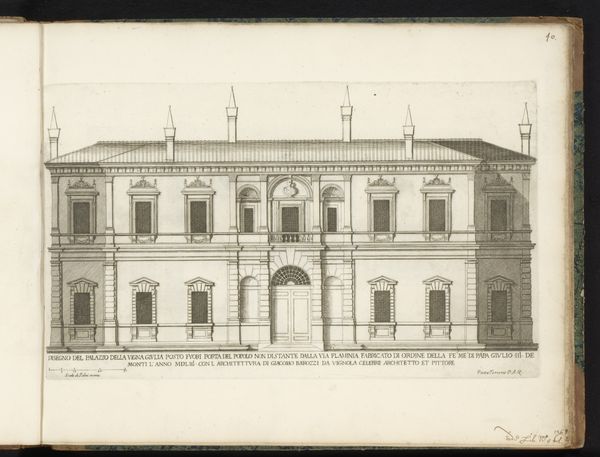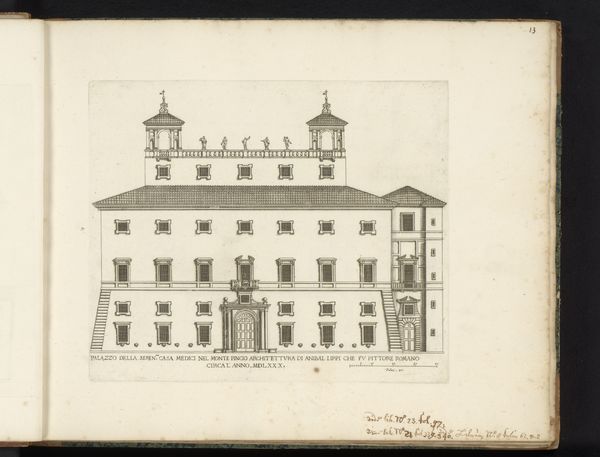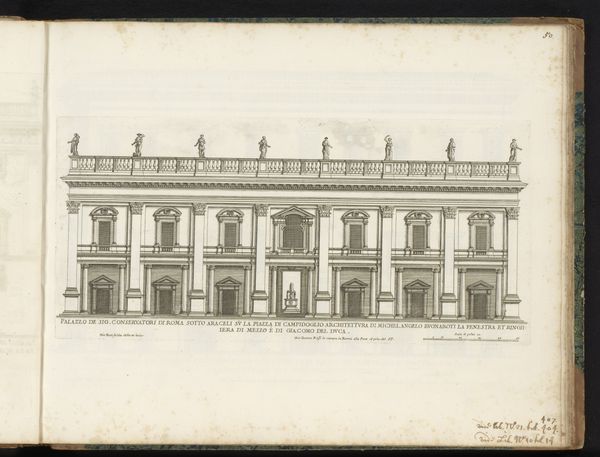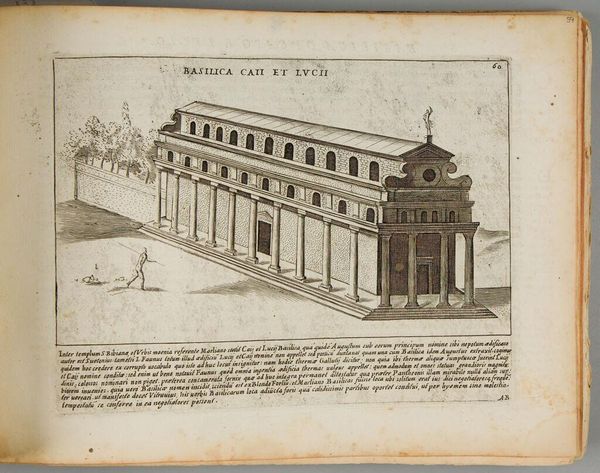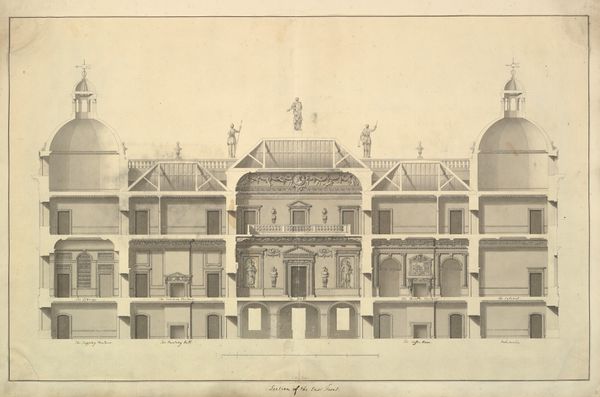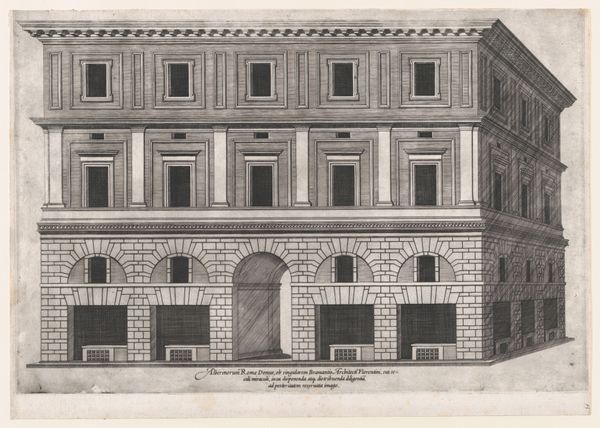
drawing, print, paper, ink, engraving, architecture
#
drawing
#
baroque
# print
#
paper
#
form
#
ink
#
line
#
cityscape
#
engraving
#
architecture
#
building
Dimensions: height 286 mm, width 402 mm
Copyright: Rijks Museum: Open Domain
Curator: So, this is Giovanni Battista Falda's "Facade van Villa Farnese te Caprarola," created after 1655. The materials include ink, paper and it is an engraving or print, currently residing at the Rijksmuseum. Editor: Yes, it’s fascinating. I'm struck by how precise the lines are. It gives it a very ordered, almost diagrammatic feel. What can you tell me about this work? Curator: From a materialist perspective, consider the process of creating this print. Engraving demanded skill, labor, and time. Each line meticulously etched contributes to the image's overall effect. Think about the socio-economic conditions: prints like this served as tools to distribute architectural knowledge. Editor: That's a good point about the distribution of knowledge. How would this print have been consumed and what does it tell us about society at the time? Curator: It probably reached other architects, wealthy patrons, perhaps even skilled craftspeople aspiring to build structures in this style. The print itself becomes a commodity, showcasing not just the villa, but also Falda’s skills, and the status associated with owning or emulating such grand architecture. Do you think the material choice influenced the artist's intention? Editor: Definitely. Engraving gives it a sense of authority, like a blueprint. Something easily reproduced compared to, say, an oil painting. What would an oil painting even offer that this cannot? Curator: Precisely. An oil painting might emphasize the unique vision of the artist, whereas the engraving here speaks to standardization, to disseminating a design for broader consumption. The materials speak to the goals. Editor: I hadn't really considered the choice of print as a social and economic decision, rather than just an artistic one. I will have to think more about art’s role in material exchange. Curator: Exactly, that is often overlooked when one focuses simply on aesthetics. Considering it alongside material, consumption and the artist’s intentions enriches our perception.
Comments
No comments
Be the first to comment and join the conversation on the ultimate creative platform.
